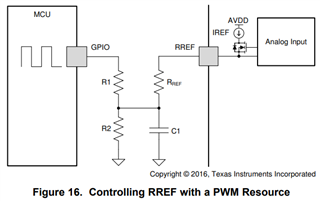Other Parts Discussed in Thread: DRV8886,
Hi team,
When using the current setting by connecting a resistor between the RREF pin and GND, does the IFS accuracy change from ±6.25% when the IFS setting (resistor value) is changed?
If the accuracy changes, can you tell me the relationship between the size of the IFS and the accuracy?
Regards,
Yamaguchi



